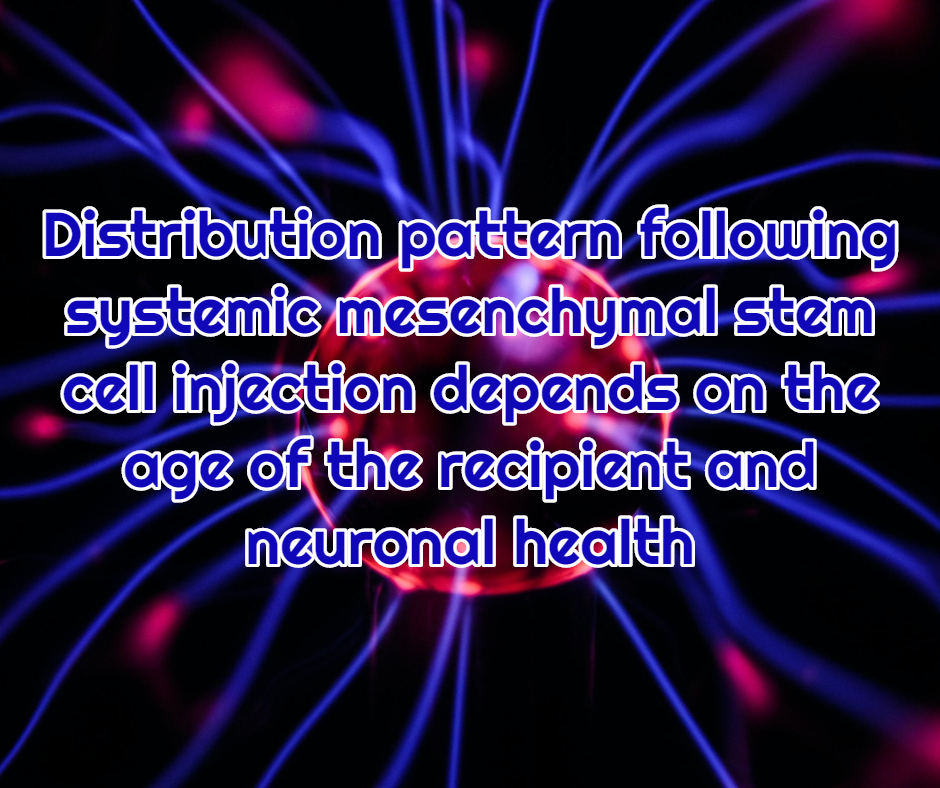Distribution pattern following systemic mesenchymal stem cell injection depends on the age of the recipient and neuronal health Abstract:
This page is a review of the study, Distribution pattern following systemic mesenchymal stem cell injection depends on the age of the recipient and neuronal health. At Dream Body Clinic we deal with Alzheimer’s Disease Dementia with Stem Cell Therapy. For Alzheimer’s and dementia we use 50 million mesenhcymal stem cells that are injected intrathecal (into the spinal fluid). These mesenchymal stem cells are able to travel from the spinal fluid to the cerebral fluid where they can guide the cellular repair of damage from Alzheimer’s and dementia. Learn about Dream Body Clinic Alzheimer’s Stem Cell Treatment Here. This treatment has shown tremendous results in cognition and verbal response in patients. Read the following study to learn more about the deep details of how mesenchymal stem cells can treat Alzheimer’s and Dementia. The following is the Alzheimer’s Disease Dementia and Stem Cell Therapy Study Abstract.
Background: Mesenchymal stem cells (MSCs) show therapeutic efficacy in many different age-related degenerative
diseases, including Alzheimer’s disease. Very little is currently known about whether or not aging impacts the
transplantation efficiency of MSCs.
Methods: In this study, we investigated the distribution of intravenously transplanted syngeneic MSCs derived from
young and aged mice into young, aged, and transgenic APP/PS1 Alzheimer’s disease mice. MSCs from male donors
were transplanted into female mice and their distribution pattern was monitored by PCR using Y-chromosome
specific probes. Bio-distribution of transplanted MSCs in the brains of APP/PS1 mice was additionally confirmed by
immunofluorescence and confocal microscopy.
Results: Four weeks after transplantation into young mice, young MSCs were found in the lung, axillary lymph
nodes, blood, kidney, bone marrow, spleen, liver, heart, and brain cortex. In contrast, young MSCs that were
transplanted into aged mice were only found in the brain cortex. In both young and aged mouse recipients,
transplantation of aged MSCs showed bio-distribution only in the blood and spleen. Although young transplanted
MSCs only showed neuronal distribution in the brain cortex in young mice, they exhibited a wide neuronal
distribution pattern in the brains of APP/PS1 mice and were found in the cortex, cerebellum, hippocampus,
olfactory bulb, and brainstem. The immunofluorescent signal of both transplanted MSCs and resident microglia was
robust in the brains of APP/PS1 mice. Monocyte chemoattractant-1 levels were lowest in the brain cortex of young
mice and were significantly increased in APP/PS1 mice. Within the hippocampus, monocyte chemoattractant-1
levels were significantly higher in aged mice compared with younger and APP/PS1 mice.
Conclusions: We demonstrate in vivo that MSC bio-distribution post transplantation is detrimentally affected by
aging and neuronal health. Aging of both the recipient and the donor MSCs used attenuates transplantation
efficiency. Clinically, our data would suggest that aged MSCs should not be used for transplantation and that
transplantation of MSCs into aged patients will be less efficacious.
Keywords: Mesenchymal stem cells, Biodistribution, Systemic injection, Aging, Alzheimer’s disease
Distribution pattern following systemic mesenchymal stem cell injection depends on the age of the recipient and neuronal health – Full Study Below
Distribution-pattern-following-systemic-mesenchymal-stem-cell-injection-depends-on-the-age-of-the-recipient-and-neuronal-health.-Stem-Cell-Research-Therapy